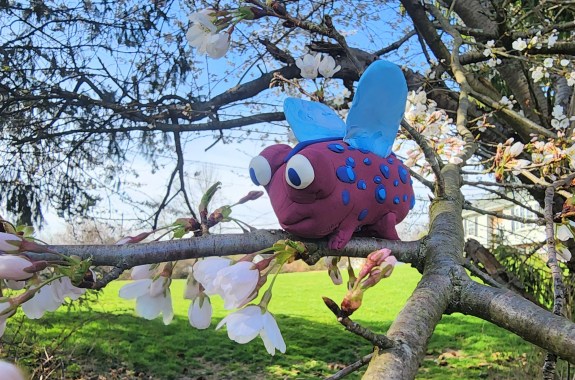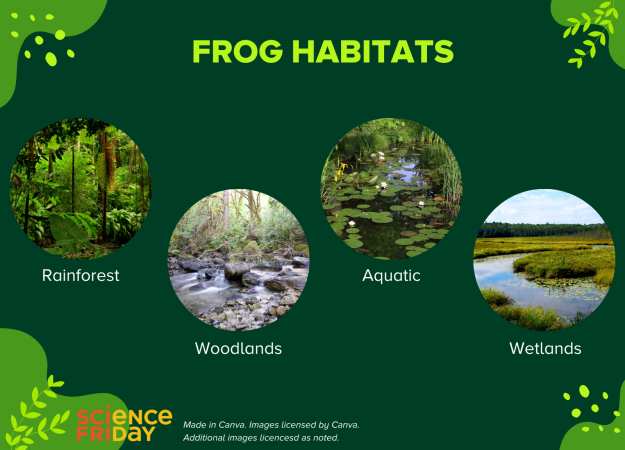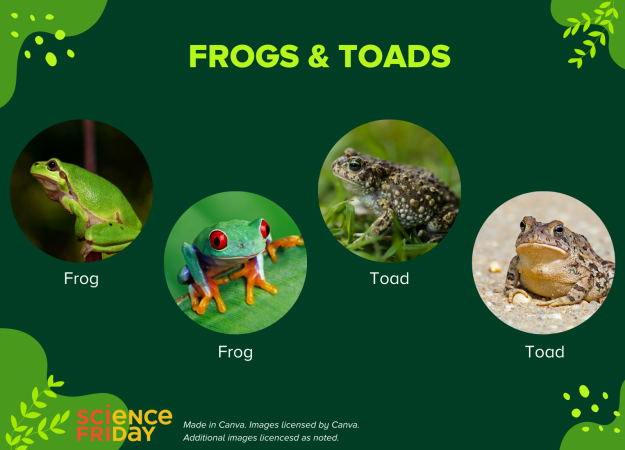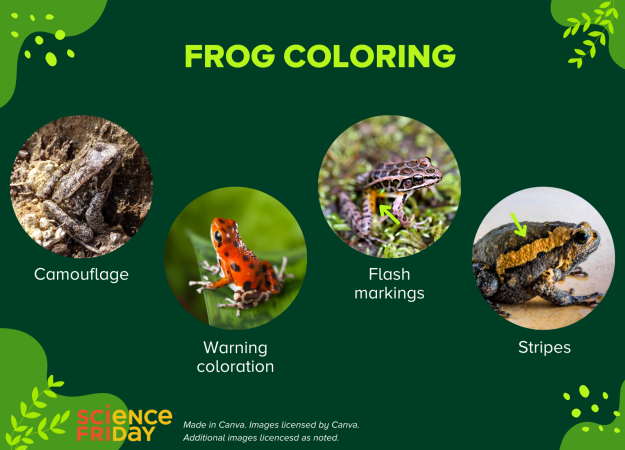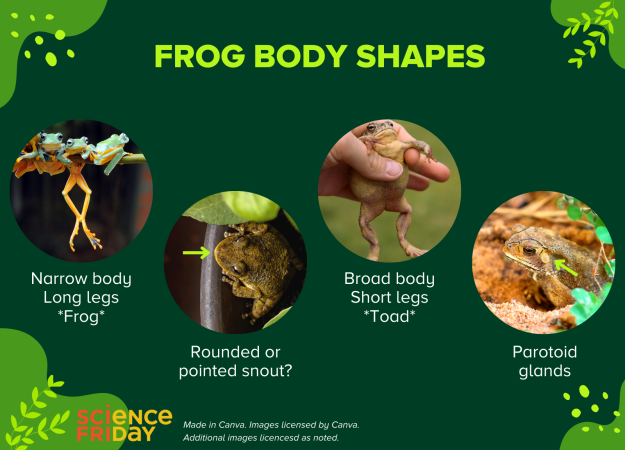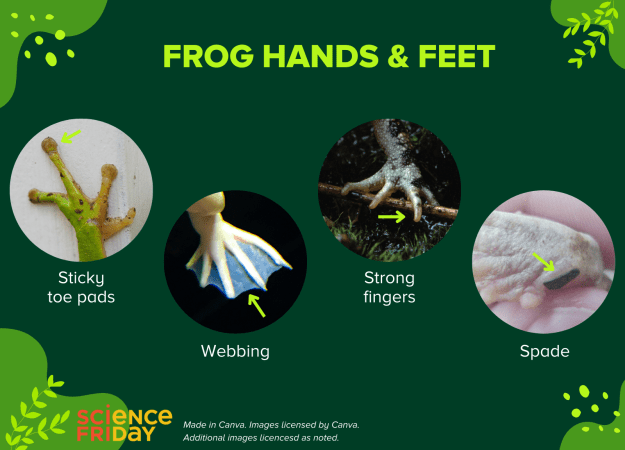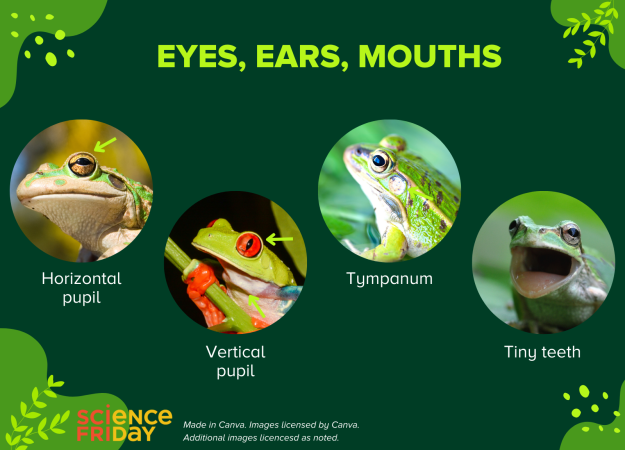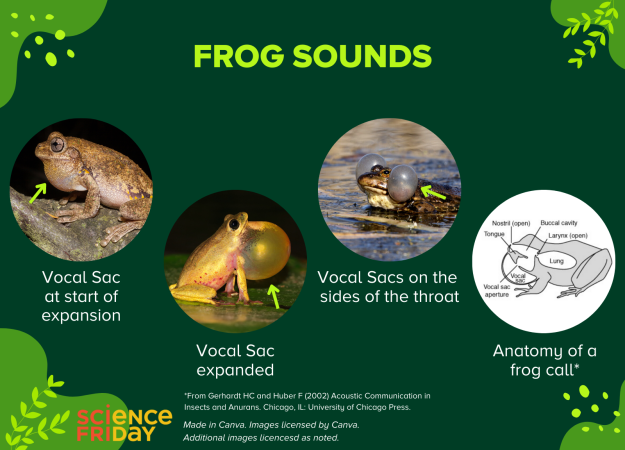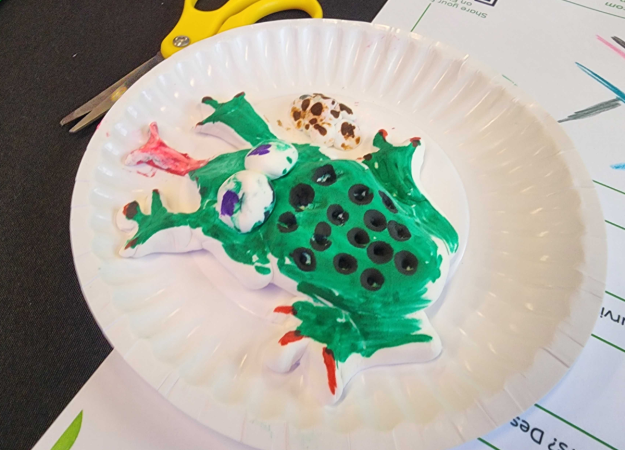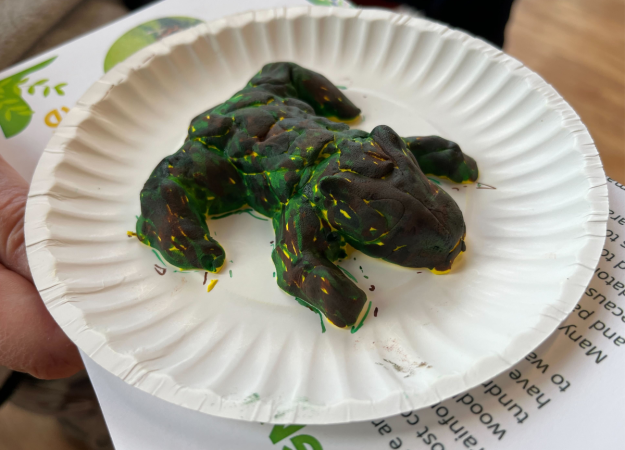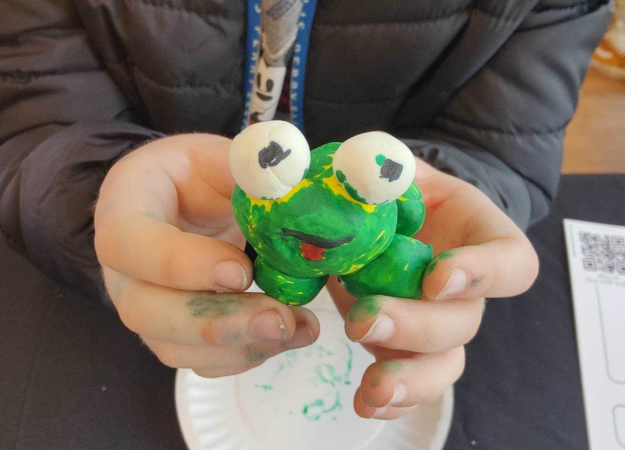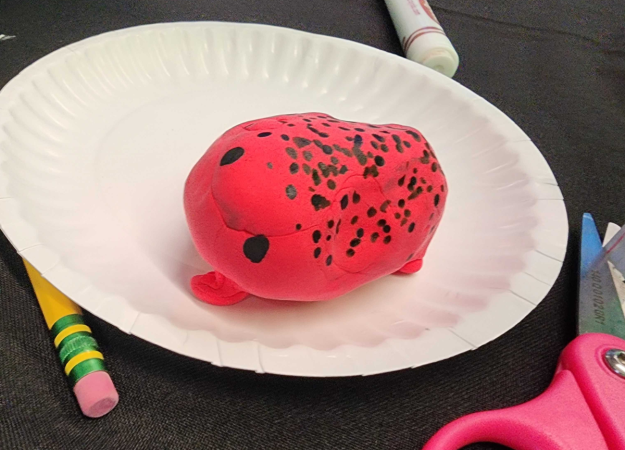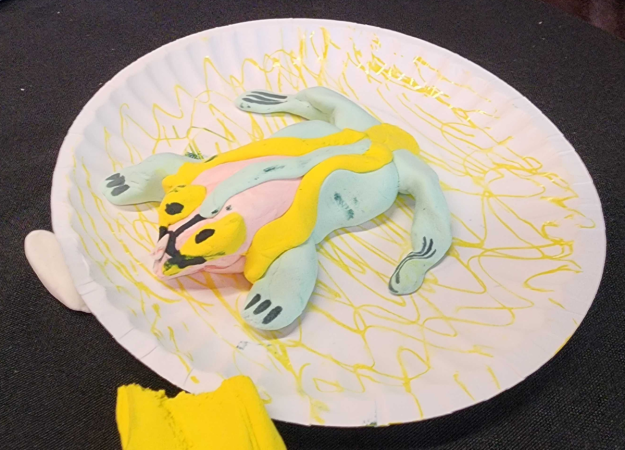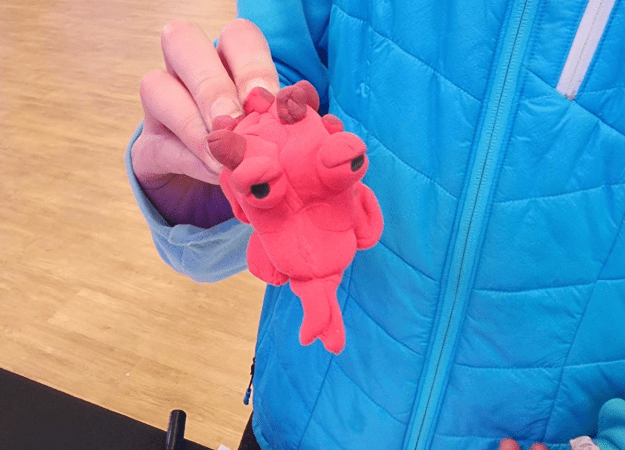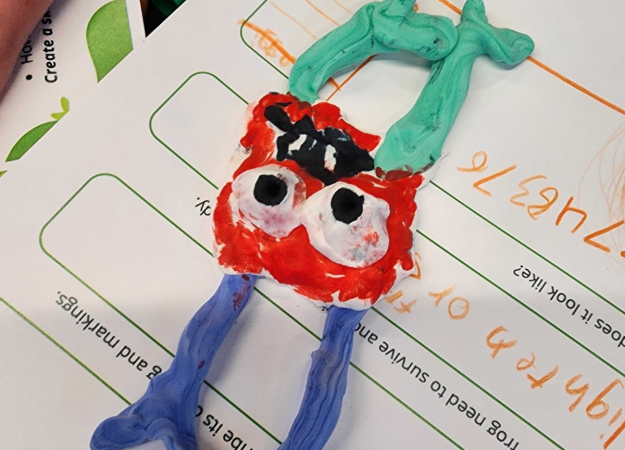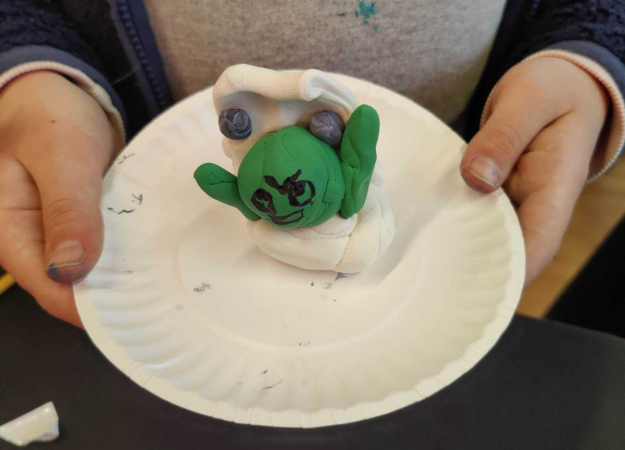Grade Level
All
minutes
15 min - 1 hr
subject
Environmental Science
Activity Type:
Science Club, animal adaptations, making models, STEAM, Family activity
There are over 5,000 species of frogs worldwide—more than 100 in North America alone. Frogs show a tremendous amount of biodiversity in their calls, their coloration, their body type, and their behaviors. These amazing frog adaptations have helped them survive in habitats all over the world.
In this activity, you’ll learn all about the ways frogs adapt to their surroundings and then design your own frog species.
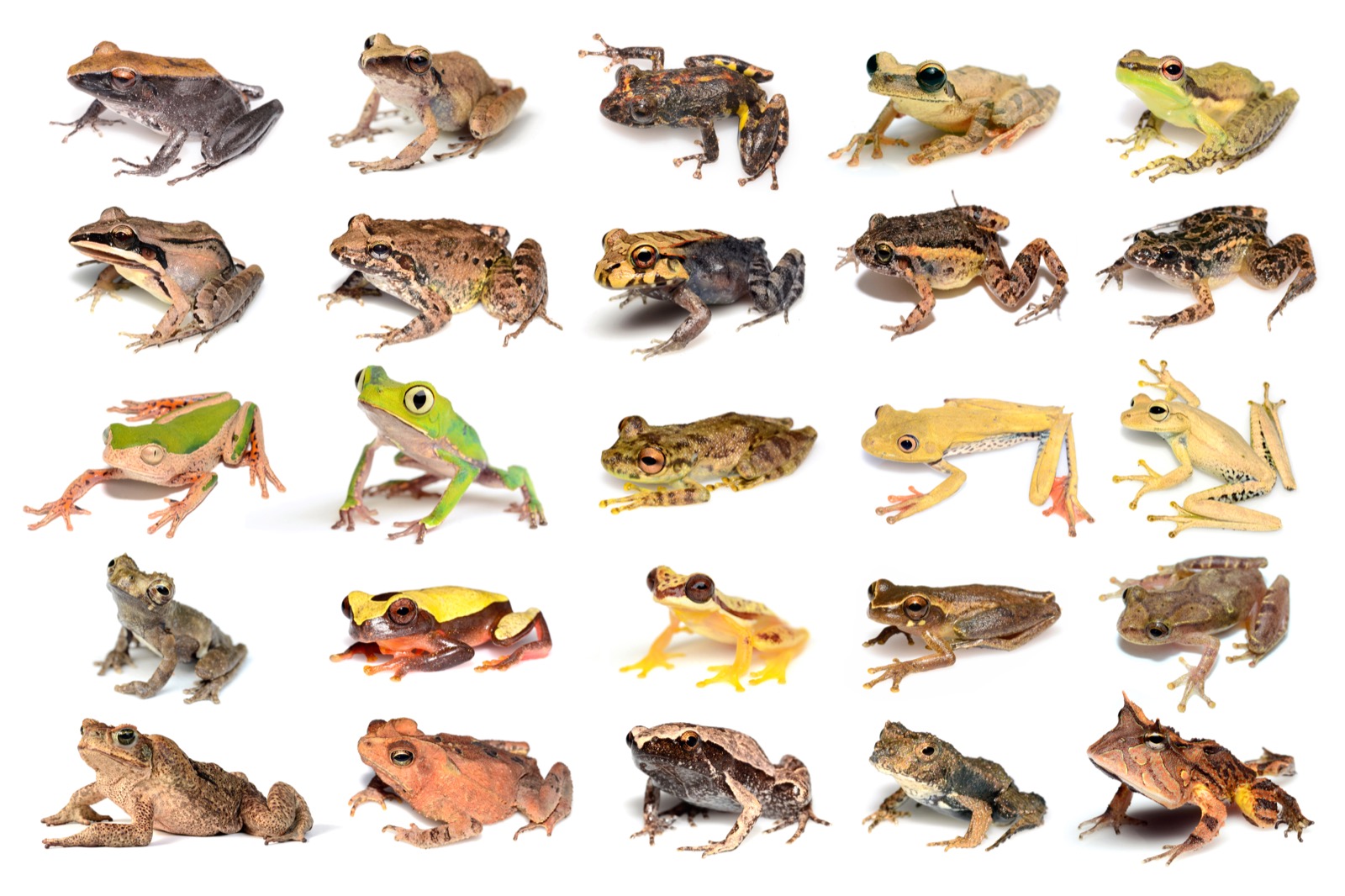
Materials
- Design a Frog Worksheet
- Frog Presentation (optional)
- Additional references about frogs (optional)
- Crayons, colored pencils, or markers
- Clay in various colors
Start With A Habitat
Before you go much further, there is something very important you need to know: All toads are frogs, but not all frogs are toads. For this activity, you can design either, but it’s important to know the difference. Frogs often have moist, slimy, smooth skin; toads usually have drier, warty skin. As a result, frogs typically live in or near water, such as lakes, ponds, and streams, while toads spend more time on land because their skin is more waterproof. Toads still need moisture, just not as much as frogs. Toads and frogs have evolved over time to be adapted to their habitats.
Frogs and toads live all over the world except Antarctica and Greenland. They are most commonly found in warm, wet habitats. Frogs and toads are often found in woodlands, rainforests, and aquatic areas, but some species make their homes in deserts and even in tundra north of the Arctic Circle!
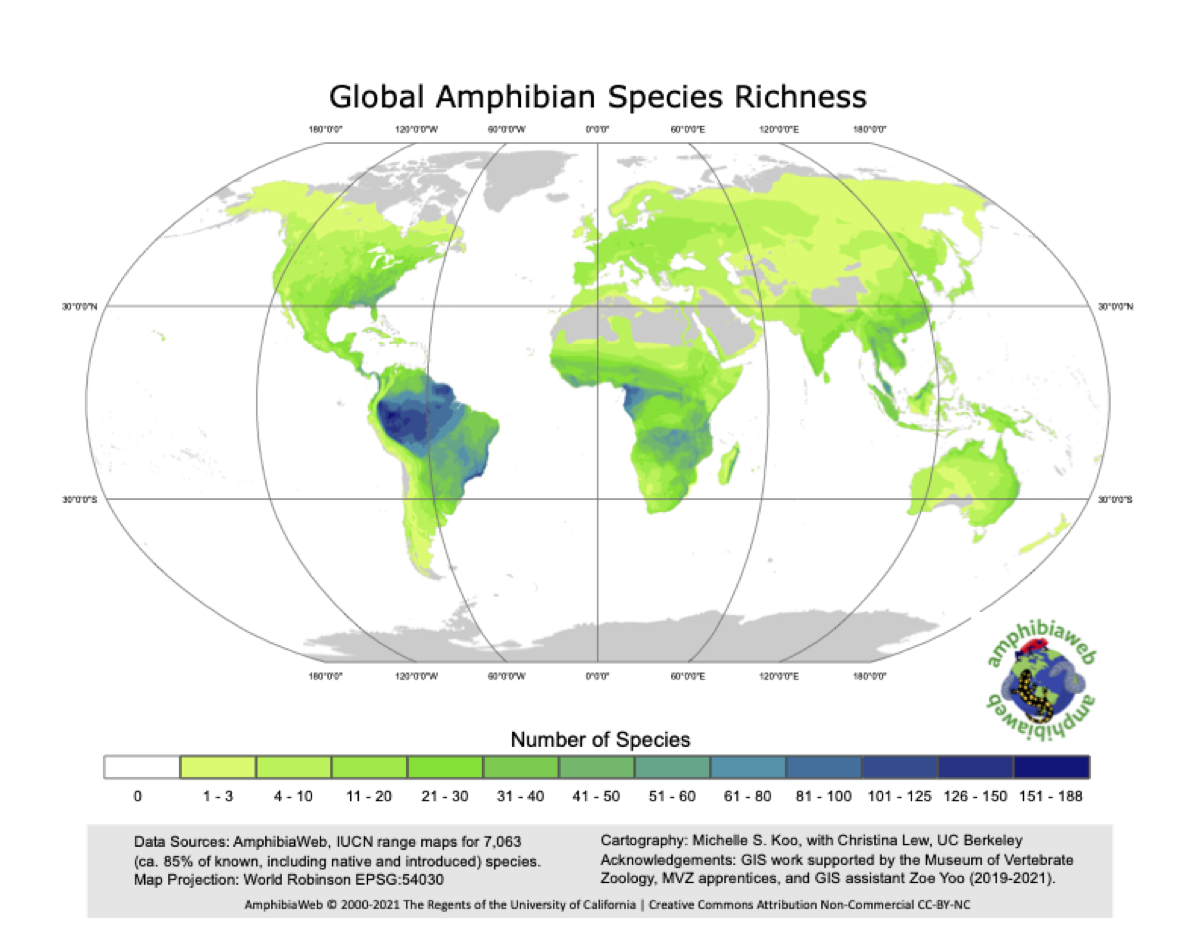
When you design a frog or toad, where it lives should determine many of its characteristics–a frog should be well-adapted to its habitat. For example, some frogs and toads live in arid climates, like deserts. They dig deep in the dirt or sand to stay moist. Their slimy mucus can harden to protect them from getting too dry.
Use the provided presentation or other resources to research different types of frogs. Think about these questions as you do:
- Where does your frog live?
- What is the habitat like?
- How will the habitat affect your frog?
- How will your frog adapt to its environment?
Make It Easier To Be Green. Show Frogs Some Love
Pick Your Frog Adaptations
Many species of frogs and toads have colorings that match their surroundings. This camouflage helps them hide from predators. Some frogs and toads are poisonous or unpleasant tasting. Their skin color may be brightly colored to deter predators. Other frogs may have flash markings—bright markings on their thighs—that startle predators when they jump and move. Frogs and toads may also have stripes along their backs, brightly colored bellies, blotches and spots, or eye masks. These markings help frogs survive in their habitat and help people identify different species.
Frogs come in many sizes and shapes, from the size of your fingertip to the size of a small cat! Toads tend to have broader bodies, with back legs that are shorter than their bodies. Frogs tend to have slimmer, longer bodies and legs longer than their head and body combined. A frog snout (nose) can be rounded or pointed. They also have two nostrils on the top of their head by the mouth. Some frogs have parotid glands on their back, neck, or shoulders. These glands secrete a toxin to deter predators. Every feature gives the frog an advantage in its habitat.
Frog feet are very adapted to where the frog lives and how it interacts with its habitat. Arboreal frogs that live in trees often have wide sticky toe pads or discs on long fingers that can wrap around branches and vegetation. Aquatic frogs that live in the water often have webbing between the toes, most often on their back feet, to help them swim. Terrestrial frogs that live on the ground or that burrow have strong fingers and rough, bumpy feet that help them dig and crawl. Some frogs have highly specialized claws or claw-like toes, too. Others have spades—small, sharp bonelike protrusions on their back feet—that help with digging.
Frog pupils come in seven shapes! Horizontal slits are the most common, but they may also be vertical slits, diamonds, circles, triangles, fans, and inverted fans. Iris color differs too. Scientists don’t yet know how these differences affect the frog’s eyesight, but they know that a frog’s bulging eyes on top of their heads help them see in front, to the sides, and behind them.
Frog ears are very different from ours. Just behind the eyes, they have a round tympanum or tympanic membrane, which is a bit like our eardrum. This external membrane sends sound waves to the frog’s inner ear, which is protected from water. The size of the tympanum varies by frog species but can be very helpful in identifying their species.
Frogs take in air through their nostrils and mouths into their lungs, then push the air back out over vocal cords that vibrate in the larynx, much as we do. But frogs also have a flexible membrane called a vocal sac that makes the sound louder and travel further. Frogs use muscles to move the air back and forth between the lungs and vocal sac, creating resonance and amplifying the sound.
Not all frogs have teeth, but many have tiny maxillary teeth along the top jaw. They may also have bony vomerine teeth on top of their mouth behind the ridge of their upper jaw. Just one frog—Guenther’s marsupial frog—has dentary teeth, which are teeth on the bottom jaw. A few species of frogs have fang-like projections on the bottom jaw called odontoids. Frogs don’t use their teeth to chew. They use them to catch and hold onto insects, snails, slugs, or worms that they catch with their long, sticky tongues and swallow whole. Toads have no teeth at all.
Look through the examples provided in the presentation or other resources. Think about these questions as you plan your frog design:
- Does your frog need to swim, climb, or burrow? How does its body help it do those things?
- What coloring or markings does your frog have? How will these features help your frog survive and thrive?
- How can your frog’s eyes, tympanum, vocal sac, and teeth help it communicate and survive?
By Hiding Their Blood, These Frogs Pull Off The Ultimate Disappearing Act
Design Your Frog
Use the Design A Frog Worksheet to plan your frog. Where will it live? What does it look like? How has it adapted to its environment? Think about the area where you live. Can you design a frog to live there? Or maybe you’d like to design a frog to live in a rainforest or a city park or on Mars! Whatever you decide, make sure that its body will help it be successful in its habitat.
Use your worksheet to answer these questions as you design your frog:
- Where does your frog live? Describe its habitat.
- How will your frog protect itself from predators? Describe its coloring and markings.
- What adaptations does your frog need to survive and thrive? Describe its body.
- Sketch your frog. What does it look like?
Next sketch of your frog. Try drawing it from different sides—top, bottom, side, front. Point out special features like its pupils, teeth, or the pattern on its skin. How big is your frog? Mark its size on the sketch or draw a reference image to show its size. Consider its body type, legs, feet, eyes, skin, and other features. Your drawing doesn’t have to be perfect. It’s there to give others an idea of what you have designed.
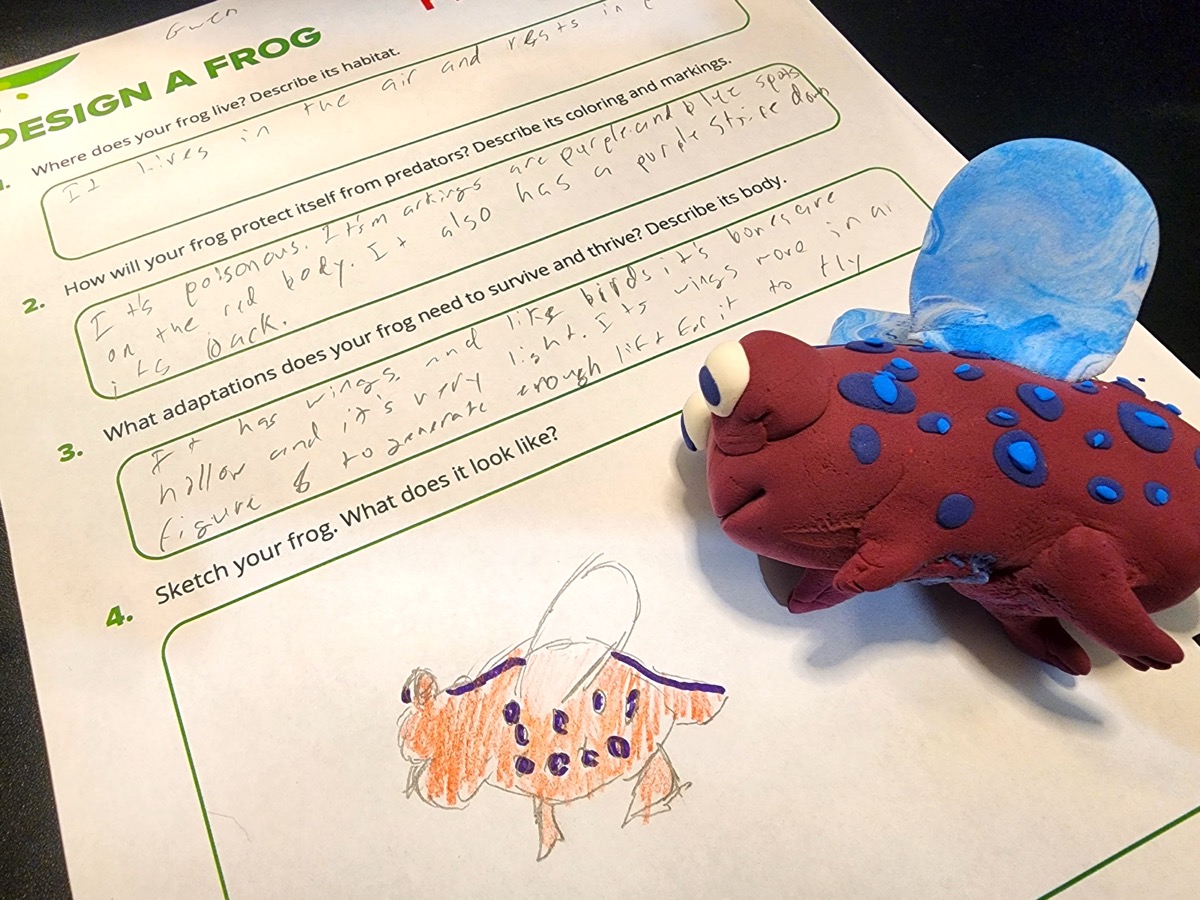
Once you are done, create a 3-dimensional model of your frog. Use clay (or other craft materials) to build your frog model. As you mold your amphibian, think about where it lives and how its body will help it survive. In the example above, a student decided to create a poisonous frog that has purple and blue warning colors. It’s adapted to living in the clouds and has wings like a hummingbird to help it move around, rather than developing long, strong legs. What story does your frog model tell?
Take It Further: Protecting Frogs And Biodiversity
Like other amphibians, frogs and toads have thin skin that is permeable, allowing gasses like oxygen, and liquids like water, to pass through. That helps frogs breathe underwater. They can absorb oxygen through their skin and into their blood vessels, even when they’re hibernating. However, this also makes them very sensitive to water loss, changes in their environment, and environmental pollution.
Declining frog populations are usually an early sign that something is wrong within an ecosystem. Frogs are a keystone species that affects the lives of many other organisms. For example, frogs eat lots of insects, but they are also a food source for birds. Fewer frogs in an area will affect both the insect and bird populations, which can cause a chain reaction throughout the ecosystem. Researchers keep a close eye on how many and what types of frogs and toads there are in critical habitats–frogs are indicators of the health of our environment.
And you can help! Through programs like FrogWatch, HerpMapper, and the Global Amphibian BioBlitz, you can participate in crowd science efforts to track frog species and report that data back to scientists. But first, you need to become learn a bit about frogs, so that you can identify the frogs you find. Check out the “Frog Introduction” below, a guide from the folks at the frog monitoring program, FrogWatch USA:
Learn the basics about frogs and how you can help scientists track their health from Carrie Basset of FrogWatchUSA. This recording is part of a series of webinars on Citizen Science hosted by Science Friday in April 2023.
As we discussed above, frogs have a variety of sounds they can make. These calls indicate distress when there is danger or advertise a desire for a mate. Every frog species has unique calls. Most often, males call at night to find a female. Females listen and follow the sound. You can learn what frogs live near you by learning their calls. Listen to frog sounds from FrogWatch and try to identify the frogs in your area.
Want more crowd science opportunities? Visit our 2023 Citizen Science page for additional projects and recordings of the series of webinars we did with SciStarter. SciStarter has a great projects finder to help you locate volunteer opportunities that match topics you’re curious or concerned about. There’s something for everyone!
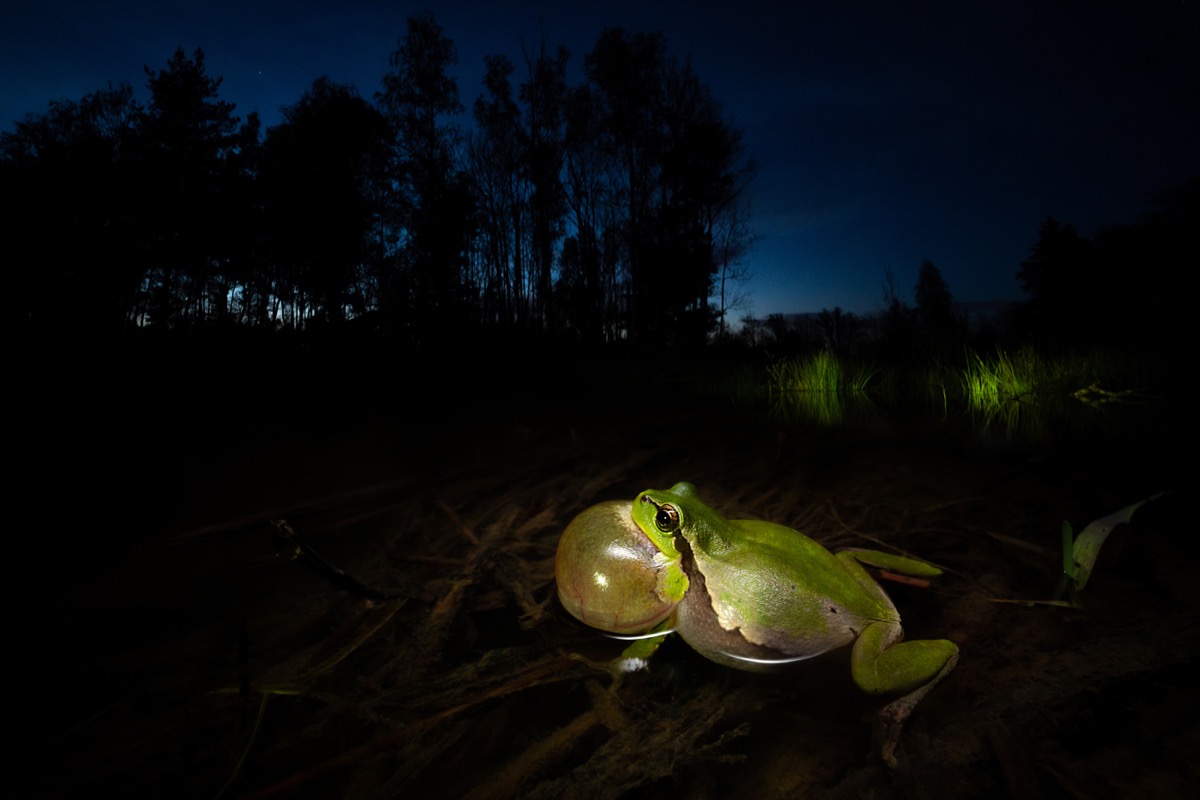
The Complex Calls Of City-Living Frogs
Additional Resources
Add to your library and discover the amazing diversity of frogs and toads!
- References for everyone
- Nonfiction for children
Want to get involved with frog and amphibian Citizen Science? Great! It’s a wonderful way to learn more about the world around you while also helping researchers by collecting important information. Here are some excellent projects:
NGSS Standards
- K-LS1-1: Use observations to describe patterns of what plants and animals (including humans) need to survive.
- K-ESS3-1: Use a model to represent the relationship between the needs of different plants and animals (including humans) and the places they live.
- 3-LS3-2: Use evidence to support the explanation that traits can be influenced by the environment.
- MS-LS2-5: Evaluate competing design solutions for maintaining biodiversity and ecosystem services.
- MS-LS4-4: Construct an explanation based on evidence that describes how genetic variations of traits in a population increase some individuals’ probability of surviving and reproducing in a specific environment.
CCSS Anchor Standards
- ELA-Literacy.RI.7: Integrate and evaluate content presented in diverse media and formats, including visually and quantitatively, as well as in words.
- ELA-Literacy.W.7: Conduct short as well as more sustained research projects based on focused questions, demonstrating understanding of the subject under investigation.
- ELA-Literacy.W.8: Gather relevant information from multiple print and digital sources, assess the credibility and accuracy of each source, and integrate the information while avoiding plagiarism.
Credits
Lesson and worksheet by Sandy Roberts.
Copyediting by Jason Rosenberg and Ariel Zych.
Digital Production by Sandy Roberts.
Educator's Toolbox
Meet the Writer
About Sandy Roberts
Sandy Roberts is Science Friday’s Education Program Manager, where she creates learning resources and experiences to advance STEM equity in all learning environments. Lately, she’s been playing with origami circuits and trying to perfect a gluten-free sourdough recipe.
